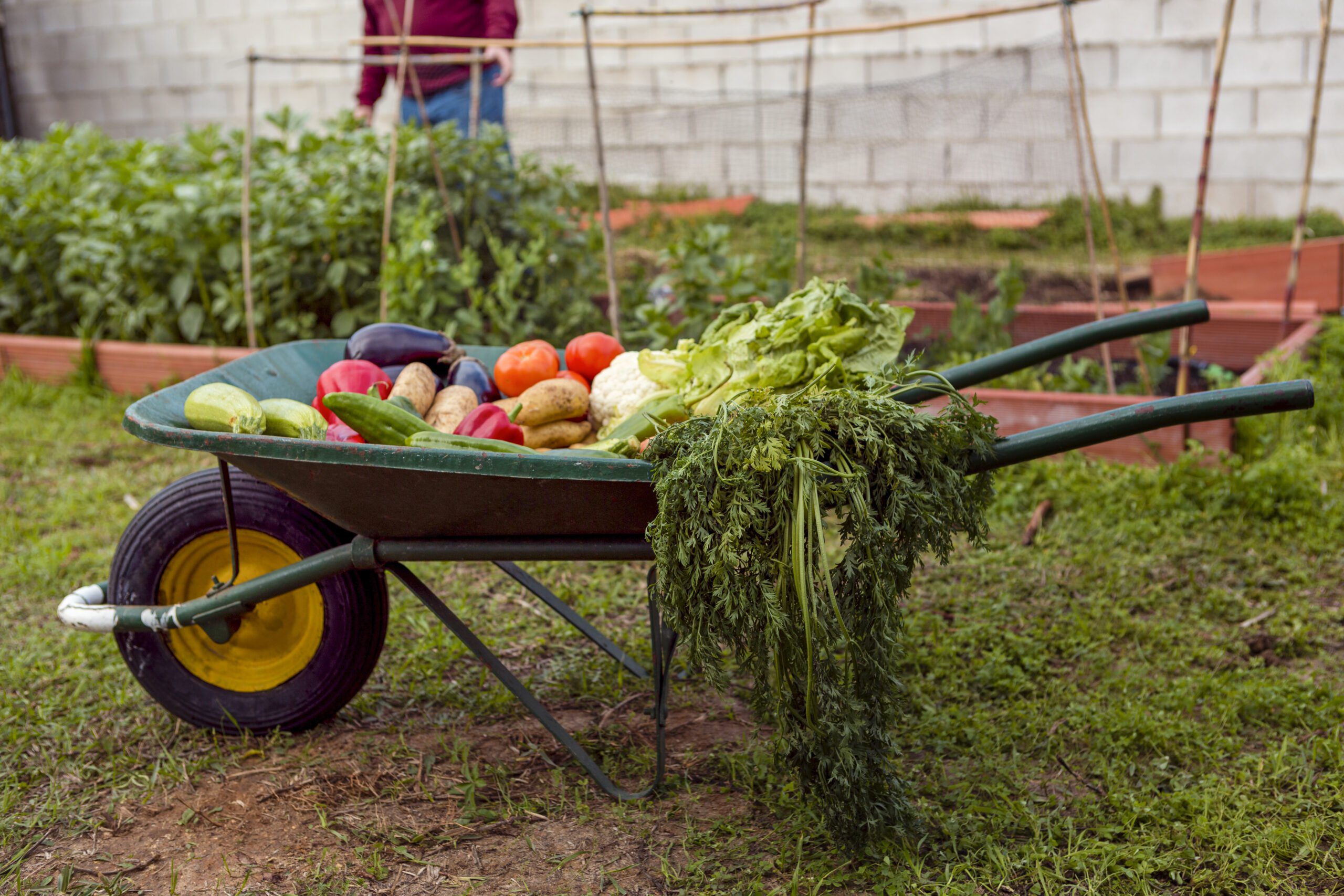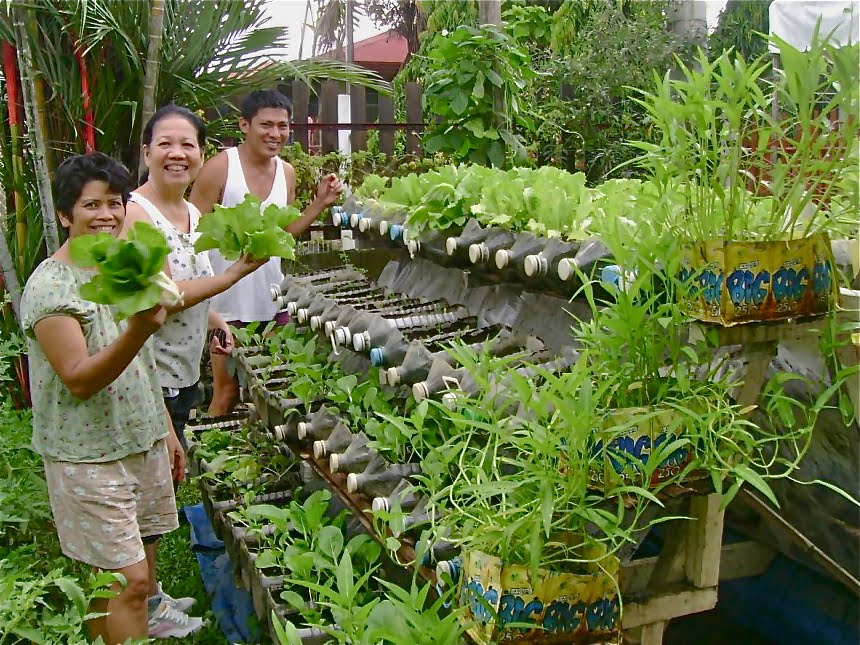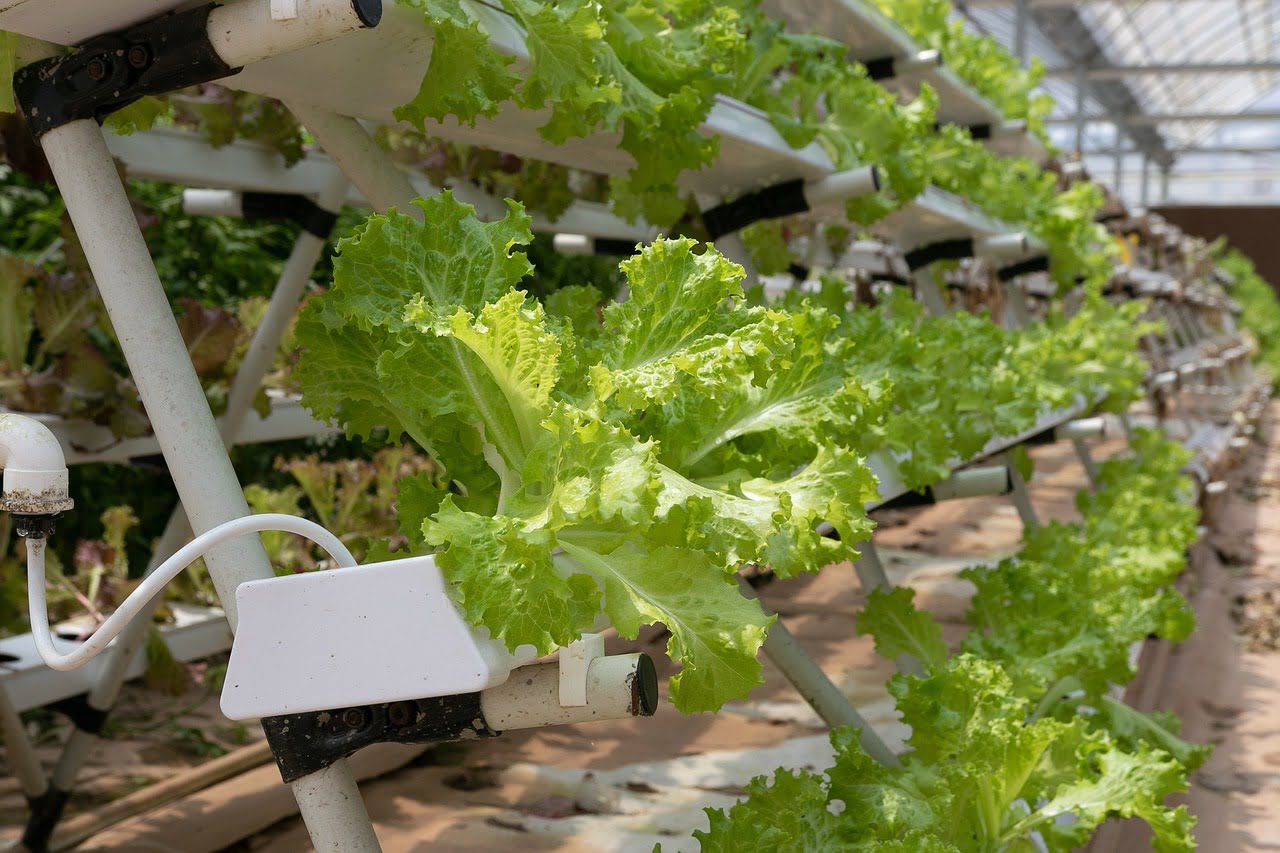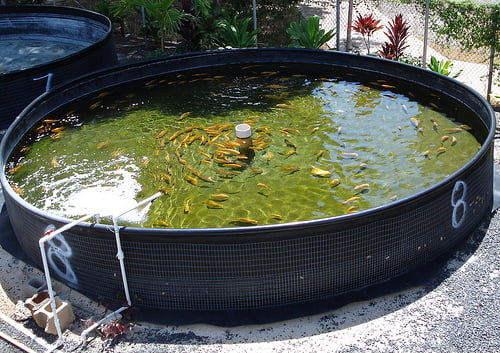Are you tired of paying high prices for fresh produce and concerned about the environmental impact of conventional farming? Look no further than backyard urban farming – a transformative solution that brings sustainable, affordable, and delicious food right to your doorstep. With this type of farming, you can step into your own backyard oasis and cultivate a thriving garden that not only nourishes your body but also reduces your carbon footprint. In this article, we’ll explore the exciting world of backyard urban farming, its numerous benefits, and practical tips to get you started on your journey towards self-sufficiency. So, let’s dive into the bountiful realm of urban farming and unlock the potential of your own green paradise.

Table of Contents
Unlocking the Potential of Backyard Urban Farming: Innovative Strategies for Success
1. The Power of Vertical Gardening

Are you short on space but longing for a lush garden? Vertical gardening is the answer to your prayers! By utilizing vertical space, you can grow a variety of plants in a compact footprint. Here’s how you can make the most of vertical gardening for your backyard urban farming:
Install Vertical Planters:
- Choose a sturdy wall or fence to hang your vertical planters.
- Select planters specifically designed for vertical gardening, ensuring they have proper drainage.
- Fill the planters with a high-quality potting mix or a specialized vertical gardening medium.
- Plant a variety of herbs, vegetables, or flowers in the planters, considering their sunlight and water requirements.
- Water the plants regularly and monitor their growth, providing support as needed.
Embrace Hanging Baskets:
- Select hanging baskets suitable for the types of plants you want to grow.
- Hang the baskets from pergolas, sturdy tree branches, or hooks attached to walls or fences.
- Fill the baskets with a well-draining potting mix.
- Plant cascading plants like strawberries, trailing vines, or colorful flowers in the baskets.
- Make sure to water the plants consistently, ensuring that the soil stays moist without becoming overly saturated.
Build Vertical Towers:
- Stack pots or repurpose materials such as PVC pipes or wooden crates to create vertical towers.
- Ensure the structure is stable and secure, anchoring it if necessary.
- Fill each pot or container with a suitable growing medium.
- Plant herbs, lettuces, or even flowers in each pot, considering their size and growth habits.
- Water the plants regularly, allowing excess water to drain properly.
Best Practices and Potential Challenges:
- Consider the weight-bearing capacity of the structures when installing vertical planters or building vertical towers for backyard urban farming.
- Ensure proper watering and drainage to prevent waterlogged soil or water damage to walls and structures.
- Monitor plant growth regularly and provide support, such as trellises or stakes, to prevent plants from bending or toppling over.
- Adjust the plant selection based on the available sunlight and microclimates in your backyard.
Benefits
- Space Optimization: Vertical gardening allows you to make the most of limited space by utilizing vertical surfaces such as walls, fences, or trellises. It is an excellent option for backyard urban farming where horizontal space is limited.
- Increased Yield: By growing plants vertically, you can maximize the number of plants you can grow in a limited area, resulting in a higher yield of fresh produce in backyard urban farming.
- Aesthetically Pleasing: Vertical gardens can add beauty and greenery to your backyard, creating a visually appealing and inviting space.
- Easy Maintenance: Vertical gardening often requires less bending or kneeling, making it more accessible and convenient for individuals with mobility issues or physical limitations.
Potential Drawbacks:
- Structural Considerations: It’s important to ensure that the vertical structures, such as walls or trellises, are sturdy and can support the weight of the plants, especially when they are fully grown and laden with fruits or vegetables in backyard urban farming.
- Limited Plant Choices: Some plants may not thrive in a vertical gardening setup due to their size, growth habits, or root systems. It’s essential to choose suitable plant varieties that are well-suited to vertical growth.
- Watering Challenges: Watering can be more challenging in vertical gardens, as water tends to drain more quickly. It’s important to monitor the moisture levels and provide adequate irrigation to prevent plants from drying out.
2. Harnessing the Potential of Hydroponics

Looking for a revolutionary approach to backyard urban farming? Say hello to hydroponics! This soil-less cultivation method allows you to grow plants using nutrient-rich water. Dive into the world of hydroponics with these step-by-step instructions:
Setting Up a Hydroponic System For Backyard Urban Farming:
- Choose a hydroponic system that suits your needs, such as deep water culture, nutrient film technique, or ebb and flow.
- Set up the system according to the manufacturer’s instructions, ensuring proper assembly and placement.
- Fill the reservoir with the appropriate nutrient solution, following the recommended ratios. In hydroponics, plants obtain their nutrients directly from the nutrient solution they are provided. The composition of the solution can vary depending on the stage of plant growth, but a commonly used formulation is the “Hoagland solution” which consists of macronutrients (Nitrogen, Phosphorus, Potassium) and micronutrients (Calcium, Magnesium, Iron, etc.) in specific ratios. Commercially available hydroponic nutrient solutions are also popular and provide a convenient option.
- Install the growing medium (such as rockwool, perlite, or coconut coir) in the designated containers or channels.
- Place the plant starts or seedlings in the growing medium, ensuring proper spacing.
Provide Optimal Conditions:
- Monitor and maintain the pH level of the nutrient solution within the optimal range for your chosen plants.
- Ensure adequate lighting by using grow lights or positioning the system in a location that receives sufficient sunlight.
- Regulate temperature and humidity to create an ideal environment for plant growth.
- Monitor the nutrient solution levels and top up or replace the solution as needed.
Harvest and Enjoy:
- Regularly check the plants for signs of nutrient deficiencies, pests, or diseases, taking appropriate action.
- Harvest the mature plants when they reach the desired size and enjoy the fruits of your hydroponic backyard urban farming labor.
- Clean and maintain the hydroponic system regularly to prevent the buildup of algae, debris, or pathogens.
Best Practices and Potential Challenges:
- Start with easy-to-grow plants like lettuce, herbs, or leafy greens before venturing into more demanding crops in backyard urban farming.
- Invest in a reliable pH meter and nutrient testing kit to monitor and adjust the nutrient solution accurately.
- Maintain proper airflow and ventilation to prevent the growth of mold or fungal diseases.
- Regularly sanitize the hydroponic system and equipment to prevent the spread of diseases.
Benefits:
- Water Efficiency: Hydroponic systems use significantly less water compared to traditional soil-based gardening methods, as the water is recirculated and reused within the system.
- Faster Growth and Higher Yields: Plants grown hydroponically often experience faster growth rates and higher yields due to the optimized nutrient delivery and controlled growing conditions.
- Year-Round Cultivation: Hydroponics allows for year-round cultivation, unaffected by seasonal limitations, making it possible to grow fresh produce even in areas with harsh climates or limited growing seasons.
- Space Flexibility: Hydroponic systems can be set up in various indoor or outdoor environments, including small spaces like balconies or basements, allowing for efficient use of available space.
Potential Drawbacks:
- Initial Investment: Setting up a hydroponic system for backyard urban farming can require a higher initial investment compared to traditional gardening methods, as it involves purchasing equipment, nutrient solutions, and grow lights if growing indoors.
- Technical Knowledge and Monitoring: Hydroponics requires a good understanding of nutrient management, pH balance, and system maintenance. Regular monitoring of nutrient levels, pH, and water quality is necessary for optimal plant growth.
- Power Dependency: Indoor hydroponic systems often rely on artificial lighting, which can increase energy consumption and dependence on electricity.
- Equipment Failure Risks: Malfunctioning equipment or power outages can disrupt the hydroponic system and potentially harm the plants if not addressed promptly.
3. Aquaponics: Symbiotic Harmony of Fish and Plants

Do you dream of a self-sustaining ecosystem in your backyard urban farming? Look no further than aquaponics! This innovative approach combines hydroponics with aquaculture, utilizing fish waste as a nutrient source for plants. Let’s explore how you can set up your own thriving aquaponics system:
Design Your Aquaponics System:
- Determine the size and scale of your aquaponics system based on available space and your goals.
- Choose the fish species suitable for your climate, considering factors such as water temperature and compatibility with plants. The choice of fish species depends on factors such as water temperature, pH levels, and market demand. Commonly used fish species in aquaponics include Tilapia, Trout, Catfish, and Perch. Additionally, ornamental fish like Koi and Goldfish can be used in smaller systems for aesthetic purposes.
- Set up a fish tank or pond, ensuring proper filtration and aeration.
- Install grow beds or floating raft systems for plant cultivation, connecting them to the fish tank.
- Create a plumbing system to circulate water between the fish tank and grow beds, allowing the nutrients to reach the plants.
Balance the Ecosystem:
- Introduce fish to the tank, monitoring water quality parameters such as temperature, pH, and ammonia levels.
- Establish a beneficial bacteria colony in the system by cycling the tank before adding fish.
- Feed the fish an appropriate diet and monitor their health regularly.
- As the fish excrete waste, the bacteria will convert it into plant-usable nutrients.
- Plant a variety of vegetables, herbs, or fruits in the grow beds or floating rafts, allowing their roots to access the nutrient-rich water
Maintain and Harvest:
- Monitor water parameters, ensuring they remain within the suitable range for both fish and plants.
- Regularly check for signs of nutrient deficiencies, pests, or diseases in the plants and take appropriate action.
- Harvest the mature plants when they are ready, enjoying the bounty of your aquaponics system.
- Perform regular maintenance tasks such as cleaning filters, removing debris, and ensuring proper water circulation.
Best Practices and Potential Challenges:
- Start with a small-scale aquaponics system before expanding to larger setups to familiarize yourself with the process.
- Research and select fish species and plant varieties that are compatible and thrive in your local climate.
- Monitor water quality parameters regularly and perform necessary water changes or adjustments to maintain a healthy ecosystem.
- Educate yourself about fish care, feeding requirements, and potential diseases to ensure the well-being of your aquatic partners.
Benefits:
- Sustainable Ecosystem: Aquaponics creates a symbiotic relationship between fish and plants, where fish waste serves as a nutrient source for plant growth. It is a closed-loop system that minimizes waste and requires fewer external inputs.
- Organic and Chemical-Free: Aquaponics can be practiced using organic principles, as it eliminates the need for chemical fertilizers or pesticides. It produces clean, chemical-free produce.
- Efficient Water Use: Similar to hydroponics, aquaponics recirculates water within the system, minimizing water consumption compared to traditional soil-based gardening methods.
- Diversified Harvest: With aquaponics, you can enjoy both fresh fish and a variety of vegetables or herbs from your backyard urban farming, providing a diverse and sustainable food source.
Potential Drawbacks:
- System Complexity: Aquaponics systems can be more complex to set up and maintain compared to other farming methods. It requires knowledge of fish care, water quality management, and maintaining the balance between fish and plant health.
- Initial Investment: The initial setup costs for aquaponics can be higher compared to traditional gardening methods, as it involves purchasing tanks, pumps, filters, and fish species.
- Biological Imbalances: Imbalances in the ecosystem can occur, leading to issues such as fish diseases, nutrient deficiencies, or excess waste. Regular monitoring and adjustments are necessary to maintain a healthy and balanced system.
- Fish Compatibility: Not all fish species are suitable for aquaponics backyard urban farming. It’s important to choose fish species that can thrive in the given environmental conditions and meet your goals for both fish and plant production.
4. Permaculture: Creating Sustainable Food Forests

Are you ready to create a thriving, self-sustaining food forest in your backyard? Permaculture offers a holistic approach that mimics the natural ecosystem, maximizing productivity while minimizing maintenance. Let’s delve into the principles of permaculture and how you can implement them for your backyard urban farming:
Understand Permaculture Principles:
- Study the principles of permaculture, including observation, design, diversity, and integration.
- Analyze your backyard’s unique characteristics, such as sunlight, soil type, and microclimates.
- Create a permaculture design in your backyard urban farming that will incorporate elements like trees, shrubs, herbs, and companion planting.
- Consider the functions of each element, such as providing shade, attracting beneficial insects, or enriching the soil.
Planting and Maintenance:
- Select fruit trees, berry bushes, and perennial plants that thrive in your climate and complement each other.
- Use companion planting techniques to maximize plant health and deter pests naturally.
- Implement mulching strategies to conserve moisture, suppress weeds, and enhance soil fertility.
- Regularly observe and maintain the food forest, pruning trees, managing pests, and adjusting planting arrangements as needed.
Create a Sustainable System:
- Incorporate elements like rainwater harvesting, composting, and recycling to create a closed-loop system for your backyard urban farming adventure.
- Install a rainwater collection system to provide irrigation for your food forest.
- Compost kitchen scraps and yard waste to produce nutrient-rich compost for the plants.
- Recycle organic materials within the garden, such as using fallen leaves as mulch or creating habitat piles for beneficial insects.
Best Practices and Potential Challenges:
- Start small for your backyard urban farming adventure and gradually expand your food forest as you gain experience and better understand your backyard’s dynamics
- Research and select plant varieties that are well-suited to your local climate, considering factors such as hardiness, disease resistance, and yield.
- Regularly monitor and manage pests and diseases using organic and permaculture-friendly methods.
- Embrace diversity within your food forest to create a resilient and balanced ecosystem.
Benefits:
- Ecosystem Regeneration: Permaculture focuses on creating sustainable, self-sufficient ecosystems that regenerate the soil, conserve water, and support biodiversity.
- Low Maintenance: Once established, permaculture systems require less maintenance compared to traditional gardening. By creating diverse plant communities and utilizing natural processes, the need for constant interventions decreases.
- Soil Health Improvement: Permaculture emphasizes building healthy soil through practices like mulching, composting, and utilizing cover crops, leading to improved fertility and long-term sustainability in backyard urban farming.
- Biodiversity Support: Permaculture promotes the cultivation of a wide range of plant species, which attracts beneficial insects, birds, and other wildlife, contributing to overall ecosystem health.
Potential Drawbacks:
- Slow Initial Results: Permaculture systems often take time to mature and reach their full potential. It may require several years for the ecosystem to establish and develop the desired balance and productivity.
- Adaptation to Local Conditions: Permaculture designs need to be adapted to the local climate, soil conditions, and available resources. This requires research and knowledge about the specific region where you plan to implement permaculture practices.
- Space Requirements: Permaculture systems typically require more space compared to other farming methods due to their focus on creating diverse and interconnected plant communities. It may not be suitable for small backyard urban farming.
5. Beekeeping: Pollination And Honey Production

Are you passionate about pollinators and sweet honey? Beekeeping is not only a rewarding hobby but also a crucial contribution to biodiversity and food production. Here’s how you can embark on a beekeeping journey for your backyard urban farming:
Educate Yourself:
- Attend local beekeeping classes or workshops to learn about bee biology, hive management, and honey extraction.
- Obtain the necessary permits or licenses required for keeping bees in your area.
- Connect with local beekeeping associations or experienced beekeepers to seek advice and guidance.
Prepare for Beekeeping In Backyard Urban Farming:
- Choose the type of hive that suits your needs and preferences, such as Langstroth, top-bar, or Warre hives.
- Set up the hive in a suitable location for your backyard urban farming, considering factors like sunlight, wind protection, and accessibility.
- Ensure a water source is available nearby for the bees to stay hydrated.
- Purchase or assemble the necessary equipment, including beekeeping suits, gloves, smokers, and hive tools.
Obtain Bees and Hive Management:
- Acquire a package of bees or a nucleus colony from a reputable bee breeder or supplier.
- Install the bees in the hive according to the instructions provided.
- Conduct regular inspections of the hive, checking for signs of disease, pests, or overcrowding.
- Perform hive management tasks such as adding or removing frames, supering for honey production, and monitoring the hive’s health.
Harvesting Honey:
- Monitor honey stores and bee populations to determine when to harvest honey.
- Follow proper techniques and safety precautions when extracting honey, ensuring minimal disturbance to the bees.
- Store and label honey appropriately for personal consumption or local sale, adhering to food safety guidelines.
Best Practices and Potential Challenges:
- Adhere to local regulations and guidelines regarding beekeeping, including hive placement and hive density.
- Educate yourself about bee diseases, pests, and treatment methods, and take preventive measures to maintain hive health.
- Provide a diverse range of flowering plants in your backyard to support bees throughout the seasons.
- Be mindful of the neighbors and ensure the bees have a suitable flight path away from high-traffic areas.
Benefits:
- Pollination Boost: Beekeeping contributes to increased pollination of plants in your backyard , which can lead to better yields and healthier gardens.
- Honey Production: Beekeeping allows you to harvest your own honey from backyard urban farming, a natural sweetener with potential health benefits and culinary uses.
- Environmental Stewardship: By supporting bee populations, you play a vital role in conserving pollinators and maintaining biodiversity in your local ecosystem.
- Educational Opportunity: Beekeeping provides an opportunity to learn about bees’ fascinating life cycle, behavior, and intricate dynamics of hive management.
Potential Drawbacks:
- Allergy Risks: Bee stings can cause allergic reactions in some individuals. It’s important to assess your sensitivity to bee stings and take appropriate safety precautions if you plan to engage in beekeeping for your backyard urban farming.
- Time Commitment: Beekeeping requires regular monitoring and care of the hive, especially during certain seasons. It’s essential to dedicate time and effort to properly manage the bees and ensure their well-being.
- Regulatory Requirements: Depending on your location, beekeeping may be subject to local regulations or permits. It’s crucial to familiarize yourself with the legal requirements and guidelines before starting a beekeeping operation for backyard urban farming.
- Potential Challenges: Beekeeping can present challenges such as hive diseases, pests, or adverse weather conditions. It’s important to stay informed about proper hive management and bee health to mitigate these risks.
6. Container Gardening: A Space-Saving Option

If you have limited space or lack a traditional garden, container gardening is a fantastic alternative for backyard urban farming. It allows you to grow a variety of plants, including flowers, herbs, and even vegetables, right on your balcony, patio, or windowsill. Here’s how to get started with container gardening:
Selecting Containers:
- Choose containers that have drainage holes to prevent waterlogging.
- Opt for containers made of materials like plastic, ceramic, or wood that are suitable for outdoor use.
- Ensure the containers are large enough to accommodate the root system of your chosen plants.
Choosing Potting Mix:
- Use a high-quality potting mix that provides good drainage and retains moisture.
- Avoid using garden soil, as it tends to become compacted in containers and may contain pests or diseases.
Selecting Plants:
- Consider the available sunlight in your space and choose plants accordingly. Some plants require full sun, while others thrive in partial shade.
- Pick plants that are suitable for container gardening, such as herbs, salad greens, dwarf vegetables, and compact flowering plants.
- Read the plant tags or do some research to determine the specific growing requirements of each plant for your backyard urban farming project.
Planting and Caring for Container Plants:
- Fill the containers with potting mix, ensuring to leave a bit of space at the top to allow for watering.
- Carefully transplant your chosen plants into the containers, ensuring they are at the same depth as they were in their original pots.
- Water the plants thoroughly after planting and maintain regular watering to keep the soil moist but not waterlogged.
- Fertilize the plants regularly with a balanced, water-soluble fertilizer according to the package instructions.
- Monitor the plants for pests and diseases, and take appropriate measures to address any issues.
Placement and Maintenance:
- Place the containers in an area that receives adequate sunlight for the plants you’ve chosen for backyard urban farming.
- Rotate the containers occasionally to ensure even growth and prevent one side from receiving more sunlight than the other.
- Monitor soil moisture levels and water the plants as necessary, adjusting the frequency based on weather conditions.
Benefits:
- Space-Saving Solution: Container gardening is ideal for those who have limited space or lack a traditional garden. It allows you to grow plants on balconies, patios, windowsills, or even indoors.
- Versatility: Containers come in various sizes and shapes, giving you the flexibility to grow a wide range of plants, including flowers, herbs, vegetables, and ornamentals. You can create a diverse and beautiful garden even with limited space.
- Mobility: One of the significant advantages of container gardening is the ability to move your plants around. You can adjust their placement based on sunlight requirements, temperature changes, or aesthetics. This mobility also helps protect delicate plants from extreme weather conditions in backyard urban farming.
- Accessibility: Container gardening allows individuals with physical limitations or mobility issues to enjoy gardening. The raised nature of containers eliminates the need for bending or kneeling, making it more accessible and enjoyable for people of all ages and abilities.
Potential Drawbacks:
- Limited Soil and Nutrients: Containers have a finite amount of soil, and over time, it may become depleted of nutrients. Regular fertilization and soil replenishment are necessary in backyard urban farming to maintain plant health and vigor.
- Root Restrictions: Plants grown in containers have limited space for root growth compared to plants in the ground. This can affect the overall size and productivity of certain plants, such as root vegetables or large fruiting plants.
- Temperature Regulation: Containers are more susceptible to temperature fluctuations than plants in the ground. In hot climates, containers can heat up quickly, potentially damaging plant roots. In cold climates, containers may require additional insulation or protection to prevent frost damage.
- Watering and Drainage: Container plants require regular watering, as they can dry out quickly, especially during hot weather. Adequate drainage is crucial to prevent waterlogging, which can lead to root rot and other plant diseases.
Conclusion:
Incorporating these six innovative ideas into your backyard urban farming practices will unlock a world of possibilities. From vertical gardening and hydroponics to aquaponics, container gardening, and permaculture, you have the tools to transform your backyard into a flourishing oasis of fresh, sustainable produce. So, don’t wait any longer—grab your gardening gloves, pick up your shovel, and embark on an exciting journey of backyard urban farming success. Remember, with creativity, dedication, and a green thumb, anything is possible in the realm of urban farming.
